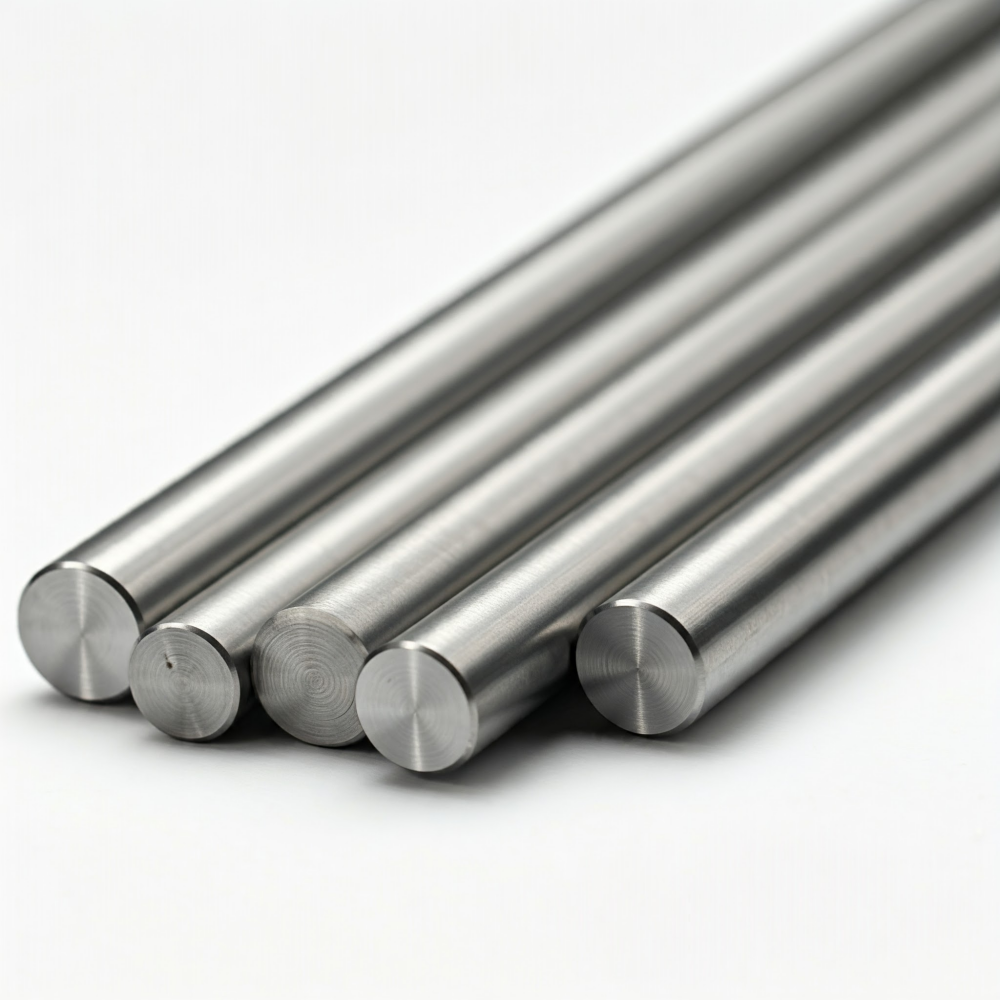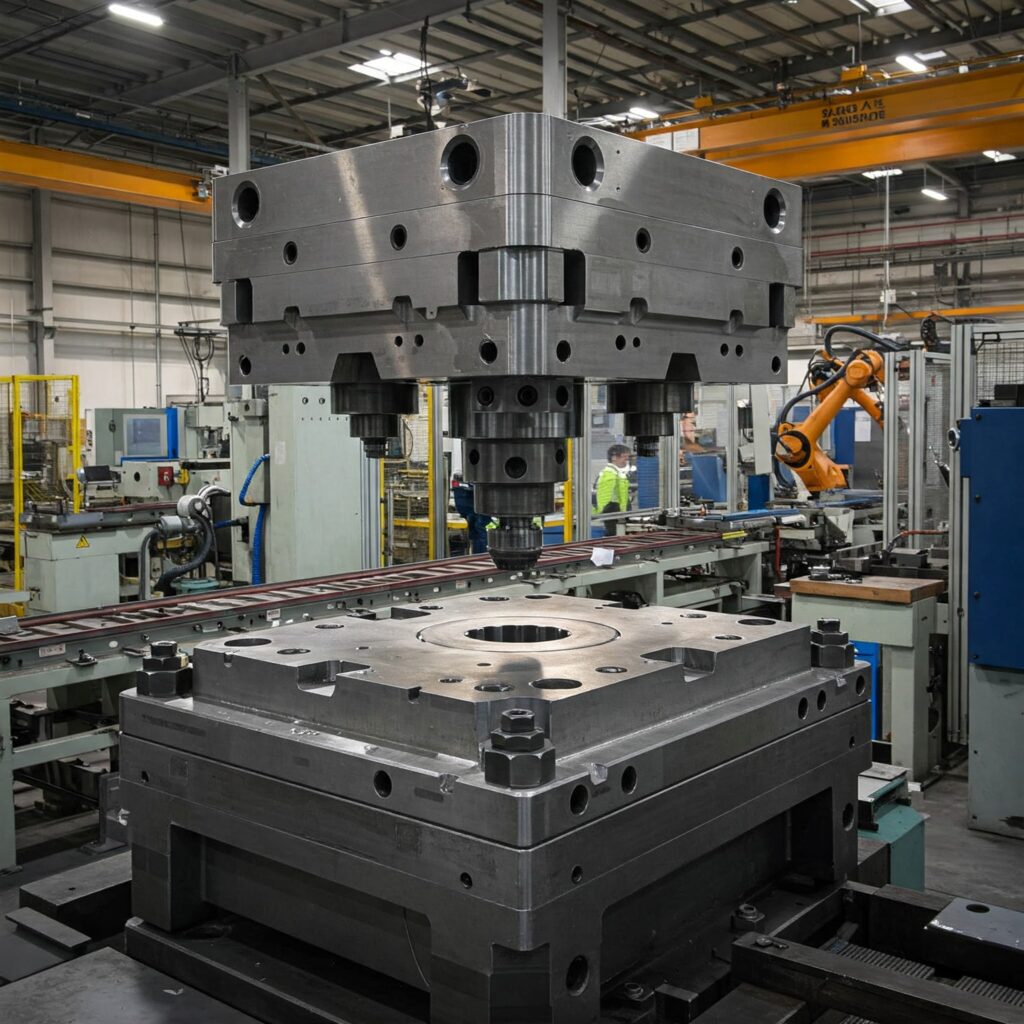D2 tool steel and A2 tool steel are both cold-work tool steels and are suitable for use in conditions below 200°C (390°F). If used in high-temperature conditions, they may undergo annealing or cracking due to thermal shock, resulting in material failure.
In the AISI classification system, A2 belongs to the “air-hardening, medium-alloy” group (Group A), while D2 belongs to the “high-carbon, high-chromium” group (Group D).
1. Chemical Composition and Microstructure
D2 steel is a high-carbon, high-chromium steel. From a microstructural perspective, these elements form a large amount of carbides, particularly the chromium-rich M7C3 carbides. It is these carbides that give D2 its high wear resistance and hardness. After appropriate heat treatment, the volume fraction of undissolved carbides in the microstructure of D2 is approximately 13%, significantly higher than that of A2.
The approximately 5% chromium content in A2 steel confers it with resistance to softening at high temperatures. A2 exhibits good wear resistance due to its microstructure, which features uniformly distributed high-carbon martensite structures and carbides. Although A2 contains alloy carbides, its grain size is smaller than that of D2 series steels.
References: 1. J. R. Davis, Metals Handbook Desk Edition, 2nd Edition, ASM International Handbook Committee. 2. Dr. Rafael A. Mesquita, TOOL STEELS Properties and Performance, CRC Press.
2. Hardness and Wear Resistance
Both D2 tool steel and A2 tool steel exhibit excellent wear resistance, with D2 offering higher wear resistance than A2. The reasons for this are explained in the preceding paragraph from the perspectives of composition and microstructure. Based on our experience, the wear resistance of D2 can be improved by 30% to 40% compared to A2. After undergoing a double tempering heat treatment process, D2 can achieve a Rockwell hardness of 58 HRC, which results in a 25% to 30% improvement in wear resistance compared to the traditional tempering process.
3. Toughness
A2 tool steel is characterized by high toughness. Compared with D2, A2 steel has higher toughness, while D2 is more brittle. The lower toughness of D2 steel is due to its high carbon content, and it is precisely these carbides that give D2 steel its excellent wear resistance. Therefore, wear resistance and toughness cannot be achieved simultaneously.
4. Hardenability and Heat Treatment
4.1 Air Hardening and Distortion
A2 and D2 are both steel grades that primarily use air quenching. Air quenching refers to the process of cooling from the austenitizing temperature to room temperature to achieve complete hardening. Its advantages include minimal deformation of the material and a low risk of cracking. Compared to oil-quenched or water-quenched steel, A2 and D2 exhibit less deformation, precisely because the temperature change during air quenching is very slow.
Both A2 and D2 exhibit excellent dimensional stability during quenching. When air-quenched at the appropriate quenching temperature, A2 expands by approximately 0.001 inches per inch. D2 achieves so-called “zero-dimensional change” by precisely controlling the balance between austenite and martensite through multiple tempering cycles. We would like to emphasize that D2 retains up to 20% of its austenite structure after quenching. If not properly treated through subsequent tempering or low-temperature processing, this may lead to dimensional instability.
4.2 Tempering
A single tempering cycle is usually sufficient for A2, while D2 requires a complex tempering cycle. The single tempering temperature for A2 is 400°F (205°C). If a second tempering cycle is required, the temperature is slightly reduced to 375°F (190°C). The purpose of the second tempering cycle for A2 is to refine the grain structure. After the second tempering cycle, A2 is particularly beneficial for parts with complex cross-sections, sharp angles, or parts requiring longer tool life and better toughness.
For D2, the single tempering temperature is 400°F (205°C), which can achieve a hardness of approximately 62 HRC. However, the more recommended and common method for D2 is double tempering. The first tempering temperature in the double tempering process is 960°F (515°C), followed by a second tempering at 900°F (480°C), with each tempering lasting 2 hours per inch of cross-section. This high-temperature double tempering process refines the grain structure, significantly enhancing wear resistance and stress relief. For D2, a high-carbon, high-chromium air-hardening steel, we strongly recommend double tempering, and in some cases even triple tempering, to promote the transformation of residual austenite into martensite.
5. Machinability and Grindability
A2 is easy to machine and grind, while D2 is difficult to machine and grind. If the machining and grinding of W1 steel is set to 100, then A2 scores 60 and D2 scores 45. The above text explains why D2 is difficult to machine and grind from the perspectives of composition and microstructure. This is another example of the two sides of the same coin.
6. Typical Applications
D2 Tool Steel Applications: D2 is widely used for long-run dies. Its exceptional wear resistance makes it ideal for:
- Blanking, Forming, and Deep Drawing Dies: Especially for long production runs, cutting laminations, and thread rolling.
- Piercing Punches and Dies: Due to its high wear resistance.
- Shear and Slitter Knives: For high production on thin or medium-thickness stock.
- Gages, Burnishing Tools, Rolls, Brick Molds: Where maximum abrasion resistance and dimensional stability are paramount.
- Hot Trimming of Forgings: Although primarily for cold work, D2 can be used for hot trimming when toughness is less critical.
A2 Tool Steel Applications: A2 is a versatile general-purpose choice, prized for its balance of abrasion resistance and toughness, along with minimal distortion in heat treatment. Common applications include:
- General Purpose Dies and Punches: For blanking, forming, and drawing, especially where good abrasion resistance and improved toughness are needed.
- Master Hubs and Molds: Particularly for small molds where good wear and dimensional stability are important.
- Shear Blades: For cold shearing, offering good wear resistance.
- Saws: It’s a general-purpose material for many saw applications.
- Solid Dies: Often preferred over D2 or D3 for solid punches and dies where extensive grinding is not feasible, because A2 offers a better balance of toughness and hardenability in larger sections.
7. Strategic Selection Considerations
When choosing between D2 and A2, consider the following:
- Production Volume and Abrasiveness: D2 is suitable for extremely long production cycles or highly abrasive workpiece materials, while A2 is suitable for medium production cycles or low abrasive materials.
- Impact Loading and Chipping Risk: When it comes to materials used for making knives, A2 steel has higher toughness and ductility, making it more suitable for knives. D2 steel, on the other hand, is too brittle and prone to chipping.
- Fabrication Costs: D2 material is more difficult to machine and grind, so A2 material has lower processing costs.
In summary, if you need a material with better wear resistance, D2 is the better choice. The advantage of A2 lies in its better toughness and ductility. An advantage in one situation may become a disadvantage in another, so it is important to fully understand the characteristics of both materials in order to make the correct choice.
Ready to Source High-Performance D2 Tool Steel?
With over 20 years of forging expertise, Aobo Steel is your trusted partner for premium D2 tool steel. We deliver materials that meet your exact specifications for high wear resistance and durability. Trust our experts to get the job done right.
Let’s Discuss Your Project Needs.
Fill out the form below for a competitive quote and an expert consultation from our specialists. We’ll respond promptly to discuss your requirements.


